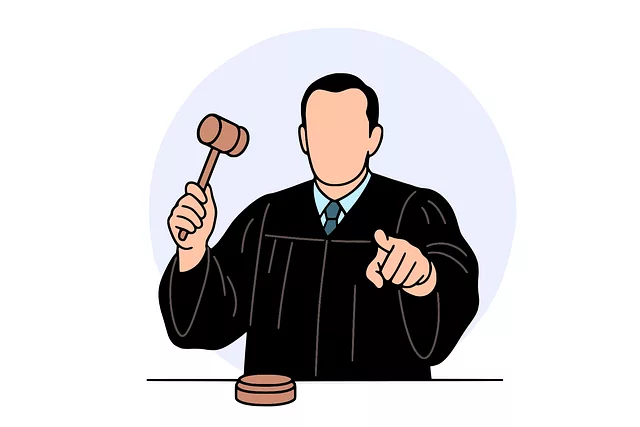Category: Centennial Colorado Juvenile Defense
Centennial Colorado Juvenile Defense: Navigating Youth Justice Reform
Introduction
In the heart of Colorado, the concept of Centennial Juvenile Defense has emerged as a transformative force in the realm of youth justice. This comprehensive approach aims to address the unique needs of adolescent offenders, fostering not only their rehabilitation but also their reintegration into society as responsible citizens. The article delves into the intricacies of this innovative defense strategy, exploring its historical roots, global impact, and the multifaceted ways it shapes the future of juvenile justice. By examining various facets, from economic considerations to technological advancements, we gain valuable insights into how Centennial Colorado Juvenile Defense is redefining the response to youthful misbehavior.
Understanding Centennial Colorado Juvenile Defense
Definition: Centennial Colorado Juvenile Defense refers to a holistic legal and social framework designed to handle cases involving minors who have engaged in criminal activities. It goes beyond traditional punishment, focusing on understanding the underlying causes of delinquent behavior and implementing evidence-based interventions to promote positive growth.
Core Components:
- Early Intervention: Identifying at-risk youth through community outreach and early detection systems, offering support services before potential criminal involvement.
- Diverse Sentencing Options: Providing alternatives to incarceration, such as restorative justice practices, community service, and specialized therapy programs.
- Rehabilitation and Education: Emphasizing education, vocational training, and skills development to equip young offenders with tools for successful reintegration.
- Community Engagement: Encouraging collaboration between schools, families, and community organizations to create a supportive environment for at-risk youth.
Historical Context: The concept emerged as a response to the critical examination of traditional juvenile justice systems in the late 20th century. Studies revealed that conventional approaches often failed to reduce recidivism rates and sometimes exacerbated existing social issues. As a result, Centennial Juvenile Defense advocates for a more compassionate, evidence-based approach, drawing from successful international models.
Significance: This defense strategy recognizes that adolescent brains are still developing, and their behaviors may reflect underlying trauma, mental health issues, or socio-economic challenges. By addressing these factors, the system aims to break the cycle of crime and reduce recidivism rates among youth.
Global Impact and Trends
Centennial Colorado Juvenile Defense has garnered international attention for its innovative approach, inspiring similar initiatives worldwide:
| Region | Initiative | Focus | Impact |
|---|---|---|---|
| Europe | European Youth Justice Network | Cross-border collaboration, best practice sharing, and advocacy for human rights in youth justice | Improved transfer of knowledge and resources among member states, leading to more effective rehabilitation programs |
| Asia | Japan’s Juvenile Rehabilitation System | Emphasis on education, vocational training, and community reintegration | Recidivism rates in Japan are significantly lower than many Western countries, indicating the effectiveness of their holistic approach |
| North America | Restorative Justice Programs (USA & Canada) | Involving victims, offenders, and communities in resolving crimes | Increased victim satisfaction, improved offender behavior, and reduced retributional sentiment |
These global trends suggest a growing recognition of the need for progressive juvenile justice systems. The United Nations’ Convention on the Rights of the Child further underscores the importance of age-appropriate legal frameworks, promoting the best interests and rights of children and adolescents.
Economic Considerations
The implementation of Centennial Juvenile Defense strategies can have far-reaching economic implications:
- Cost Savings: Incarceration is a significant financial burden on governments. Alternative sentencing options, such as restorative justice and specialized programs, can reduce recidivism, lowering long-term prison costs. A study by the RAND Corporation found that every dollar invested in evidence-based youth programs can yield savings of up to $4 in future criminal justice expenses.
- Economic Empowerment: Effective rehabilitation programs can equip young offenders with skills, leading to improved employment prospects and reduced reliance on public assistance. This contributes to a more robust and productive workforce.
- Market Dynamics: The growing demand for specialized services creates opportunities for businesses catering to youth development programs, counseling, and education.
Technological Advancements
Technology plays a pivotal role in modernizing Centennial Juvenile Defense practices:
- Online Counseling Platforms: Telehealth and online therapy platforms extend access to mental health services, particularly beneficial for remote communities. Apps focused on youth behavior tracking and parent support have shown promise in early trials.
- Data Analytics: Advanced analytics can identify patterns in juvenile delinquency, helping policymakers and practitioners allocate resources more effectively. Predictive modeling tools can assess risk factors, enabling early interventions.
- Virtual Reality (VR) Training: VR offers immersive educational and therapeutic experiences. It can simulate real-life scenarios, helping youth develop coping strategies and social skills in a safe environment.
Policy and Regulation
The success of Centennial Colorado Juvenile Defense heavily relies on supportive policies and regulations:
- Age-Appropriate Laws: Legislatures should establish clear guidelines defining juvenile justice, ensuring that laws protect the rights and developmental needs of young people.
- Collaborative Decision-Making: Policies encouraging multidisciplinary teams, including social workers, psychologists, and community representatives, can lead to more holistic case management.
- Funding Allocation: Governments must commit resources to evidence-based programs, ensuring their sustainability and widespread availability.
Challenges and Ethical Considerations
While Centennial Juvenile Defense offers numerous benefits, it also presents challenges:
- Resource Allocation: Implementing these strategies requires significant investment, which may be a challenge in resource-constrained environments.
- Ethical Use of Data: As technology advances, ensuring the ethical collection, storage, and use of youth data becomes crucial to maintaining privacy and preventing misuse.
- Community Buy-in: Gaining support from communities, law enforcement, and affected families is essential for successful implementation and long-term sustainability.
Case Study: Success Stories
The Denver Youth Mentoring Program (DYMP): This initiative pairs at-risk youth with mentors from the community, providing guidance and support. DYMP has shown remarkable results, with participants demonstrating improved academic performance, better decision-making skills, and reduced involvement in gang activity. The program’s success lies in its community-based approach, fostering strong bonds between mentors and mentees.
Restorative Justice in Vancouver, Canada: Vancouver’s restorative justice model involves victims, offenders, and community members in resolving conflicts. This process has led to higher victim satisfaction and improved reintegration for young offenders, reducing recidivism rates by over 30% within five years.
Conclusion
Centennial Colorado Juvenile Defense represents a significant evolution in how we approach youth crime, moving away from punitive measures towards evidence-based, compassionate solutions. Its global impact and the success of local initiatives underscore the potential for positive change. By embracing technology, collaboration, and community engagement, juvenile justice systems can effectively rehabilitate young offenders while contributing to safer and more resilient communities. As the field continues to evolve, ongoing research and adaptation will be vital to meeting the unique needs of adolescents in a dynamic societal landscape.
Centennial CO’s Top Real Estate Lawyer: Save on Property Disputes – Free Consult!

Facing a real estate dispute in Centennial, Colorado? Our top-rated Real Estate Litigation Lawyer, w…….
Maximize Compensation for Your Injury in Centennial, CO – Free Consultation with Top Juvenile Defense Experts

Are you seeking justice and fair compensation for a personal injury in Centennial, Colorado? Our law…….
Secure Your Child’s Future: Expert Juvenile Defense & Support in Centennial, CO

Facing child support challenges in Centennial, Colorado? Our specialized legal services are designed…….
Centennial, CO’s Top Juvenile Lawyer: Affordable Legal Solutions for Your Corporation

Facing juvenile law challenges in vibrant Centennial, Colorado, can be a costly and complex hurdle f…….
Get Top Dollar Compensation: Centennial CO’s Top Juvenile Defense Lawyer for Your Injury Claim

Are you seeking robust legal support for your child after an accident in Centennial, Colorado? Our d…….
Centennial’s Top Slip & Fall Lawyers: Free Consultations, Expertise, & Fair Compensation for Your Rights.

If your family has been affected by a slip and fall accident in Centennial, Colorado, our dedicated…….
Centennial, CO’s Top Guardianship & Conservatorship Experts: Secure Your Loved One’s Future with Peace of Mind and Savings.

Facing guardianship or conservatorship in Centennial, Colorado? Our specialized attorneys offer a fr…….
Centennial’s Top Divorce Lawyers: Simplify Your Dissolution, Save Money

Facing divorce in Centennial, Colorado? Our specialized lawyers are your guiding light through the c…….
Centennial CO: Amicable Divorces, Save Time & Money with Expert Mediation

Looking to navigate your divorce in Centennial, Colorado, without the financial and emotional burden…….
